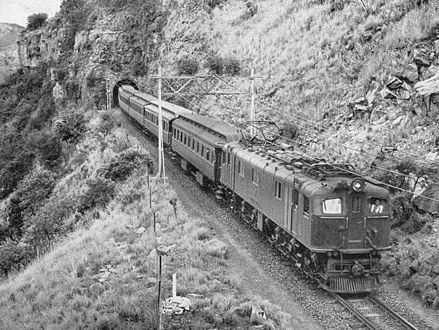
The South African Railways Class 1E of 1925 was an electric locomotive.

The South African Railways Class 4E of 1952 was an electric locomotive.

The South African Railways Class 5E, Series 1 of 1955 was an electric locomotive.

The South African Railways Class 5E, Series 2 of 1957 was an electric locomotive.

The South African Railways Class 5E1, Series 2 of 1963 was an electric locomotive.

The South African Railways Class 5E1, Series 3 of 1964 was an electric locomotive.

The South African Railways Class 5E1, Series 4 of 1965 was an electric locomotive.

The South African Railways Class 5E1, Series 5 of 1966 was an electric locomotive.

The South African Railways Class 6E1, Series 4 of 1973 was an electric locomotive.

The South African Railways Class 12E of 1983 was an electric locomotive.

The South African Railways Class 31-000 of 1958 was a diesel-electric locomotive.

The South African Railways Class 61-000 of 1959 was a diesel-hydraulic locomotive.

The South African Railways Class 37-000 of 1981 is a mainline diesel-electric locomotive.

The South African Railways Class 23 4-8-2 was a class of South African steam locomotives.

The South African Railways Class 2E of 1937 was an electric locomotive.

The South African Railways Class 15F 4-8-2 of 1938 is a steam locomotive.

The South African Railways Class 15C 4-8-2 of 1925 was a steam locomotive.

The South African Railways Class GM 4-8-2+2-8-4 of 1938 was an articulated steam locomotive.

The South African Railways Dock Shunter 0-4-0ST of 1903 was a steam locomotive from the pre-Union era in the Cape of Good Hope.

The South African Railways Class 16DA 4-6-2 of 1930 is a class of steam locomotives.


























